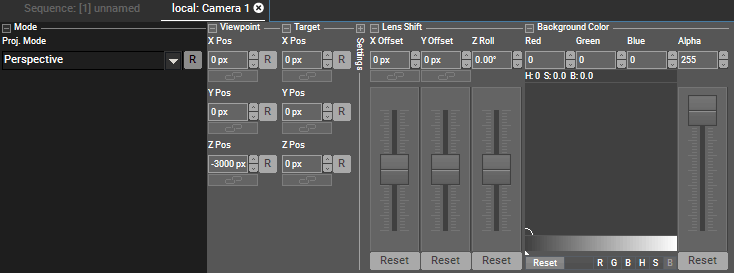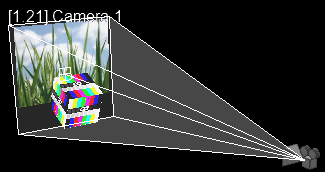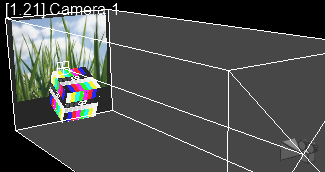Loading...

There are two projection modes available for each camera device:
- Perspective Mode (by default) and
- Orthogonal Mode.
The perspective mode allows a perspective angle to your view from different 3D scene.
The orthogonal mode switches off the depth and perspective view of the camera. The Z position of any layer will only affect the rendering order but won't make any visual change to the layer. The control channels do still access the three dimensional orientation of the 3D camera.
This is an example of how the projection mode affects the rendering. The scene pictures a background layer with a tilted cube in front of it. In the perspective mode, the edge of the cube that is the farthest from the camera position is rendered smaller then the edge nearer to the camera.
 |
 |
Now, the camera is switched to orthogonal mode. The 3D scene stays the same, but the camera wireframes change accordingly. In orthogonal mode there is no distortion due to perspective and all edges have the same size.
 |
 |
You can control the Projection Mode parameter externally, simply assign the value 0 for "Perspective" and 1 for "Orthogonal".
For DMX control, the chapter DMX Tables lists all parameter information, for other external control e.g. via the Widget Designer the Parameter List is of interest.